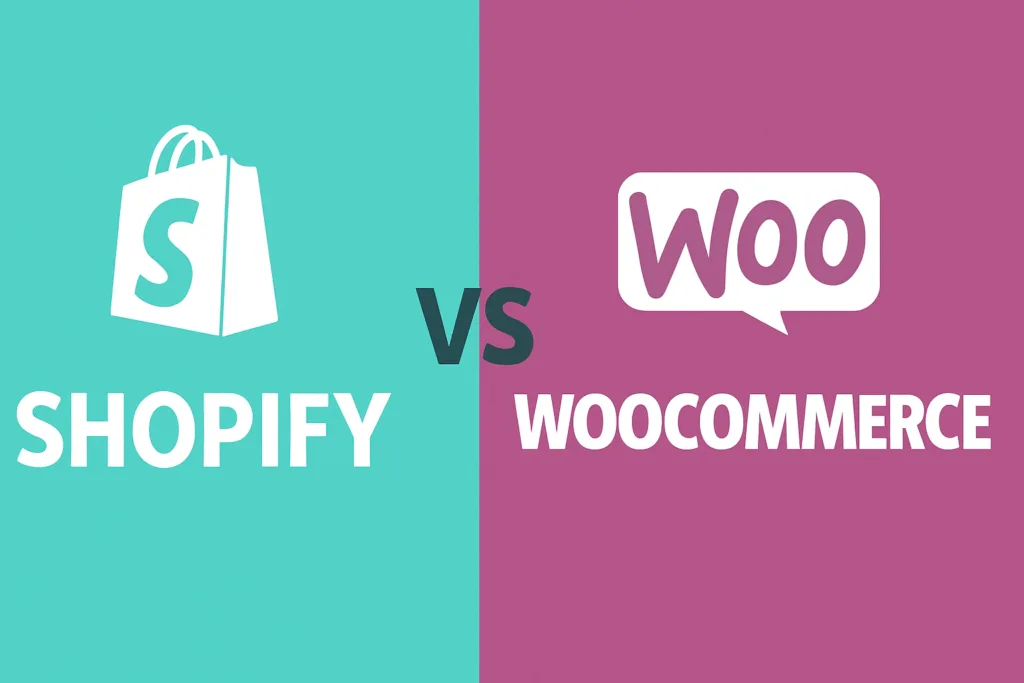ThomasNet Navigator Alternatives: Why Industrial Manufacturers Should Move Away from ThomasNet Navigator

Updated: November 12, 2025
Introduction: The Problem with Outdated Industrial Platforms
Many U.S. industrial manufacturers are still stuck on ThomasNet Navigator – the legacy website platform offered by ThomasNet.
It used to be the go-to solution for hosting product catalogs and managing RFQs, but in 2025, that’s no longer enough to keep up with the competition.
Why?
Because Google and AI-powered search (like ChatGPT, Perplexity, and Google’s AI Overview) reward modern, fast, structured websites – and ThomasNet Navigator is none of those things.
In this article, we’ll break down exactly why ThomasNet Navigator holds your company back and how modern platforms like Shopify, WooCommerce, and WordPress can help industrial manufacturers capture more leads, get more orders, and rank better in search.
Key Takeaways
- Websites built on the ThomasNet Navigator platform tend to be slow and outdated, limiting your visibility in search engines and AI platforms like ChatGPT.
- You don’t truly own your website – ThomasNet owns the structure and limits customization.
- Modern platforms like Shopify, WooCommerce, and WordPress give manufacturers full control, speed, and scalability.
- Advertisers who deeply depend on ThomasNet for lead generation and visibility have been seeing diminishing returns over the last few years.
- If you want both RFQs and e-commerce (online sales), go with Shopify or WooCommerce.
- If you want RFQs only, choose WordPress and focus on lead generation.
Why AI Mentions Matter in Manufacturing
For B2B manufacturers, a single AI-driven recommendation can lead to multi-million-dollar contracts.
- LLM mentions = instant authority. If AI cites your company, prospects immediately see you as a trusted option.
- Winner-takes-most visibility. There’s no “page 2” in AI results – you’re either included, or you’re not.
- High-value buyers are using AI today. Engineers, procurement officers, and executives are already shifting to AI-driven research.
Failing to prepare for AI-driven search is like refusing to list your company in a business directory 20 years ago.
What Is ThomasNet Navigator?
ThomasNet Navigator is a catalog management system that lets you showcase your products through your ThomasNet listings and/or website.
In theory, it’s convenient – but in practice, you’re renting space in ThomasNet’s ecosystem, not building your own digital presence.
When a manufacturer uses ThomasNet Navigator:
- The catalog is hosted on ThomasNet’s infrastructure, not yours.
- Your domain and SEO authority point back to ThomasNet, not your company.
- You can’t fully customize page layouts, SEO fields, or site speed optimizations.
That means you’re not building your long-term visibility – you’re building theirs.
The Major Downsides of ThomasNet Navigator
Let’s look at the biggest drawbacks that directly impact your visibility, conversions, and competitiveness in 2025 and beyond.
1. SEO and AIO Limitations
ThomasNet Navigator severely limits your control over on-page SEO (the way your content is structured and tagged for Google and Bing search engines).
You can’t freely optimize title tags, meta descriptions, or implement advanced SEO techniques like schema markup (structured data that helps search engines and AI LLMs understand your products).
In simple terms:
Google and Bing can’t properly “read” or “trust” your content – so your SEO rankings suffer.
This leads to:
- Poor keyword targeting
- Thin content
- Duplicate or unindexed pages
Bottom line: you’re invisible where it matters most – organic and AI search.
2. Slow Load Times
Many ThomasNet Navigator sites score poorly on Google PageSpeed Insights. That’s because they’re built with outdated code and hosted on shared servers.
Slow pages lead to:
- Higher bounce rates
- Lower conversions
- Worse Google rankings
Remember: in 2025, Core Web Vitals (Google’s site performance signals) are ranking factors. If your site loads slowly, you’re already behind.
And to focus on real people – visitors don’t want to wait for slow pages to load and they don’t trust pages with elements jumping around or pages that are clearly outdated in terms of design.
3. Poor Mobile Experience
Most ThomasNet Navigator templates aren’t fully mobile-responsive. Buttons overlap, text gets tiny, and product images don’t resize properly.
With 60–70% of industrial B2B traffic now coming from mobile devices, this is a serious issue.
Mobile visitors are often field engineers, purchasing agents, or plant managers – if your site isn’t usable on their phone, you lose that lead instantly.
4. Limited Control and Customization
You can’t integrate key marketing tools like HubSpot, Google Tag Manager, or custom analytics easily.
You also can’t modify layouts, create landing pages, or optimize CTAs (click-to-action) – all essential for improving conversion rates.
In plain English:
You’re driving a car where you can’t touch the steering wheel.
5. Cost vs. Value
ThomasNet Navigator can cost thousands per year, yet delivers minimal ROI compared to what’s possible with modern CMS platforms.
You pay for hosting, support, and “visibility,” but not for performance, ownership, or SEO growth.
When you stop paying, your catalog – and visibility – disappear. That’s not an investment. That’s a rental.
6. 80% decline in traffic
According to SEMRush, ThomasNet.com’s US desktop organic traffic has seen a decline of 80% from October 2023 to October 2025.
Advertisers who deeply depend on ThomasNet for lead generation and visibility have been seeing diminishing returns over the last few years.
Manufacturers that have shifted to smarter marketing strategies are seeing significant growth in both online visibility and sales.
Better Alternatives to ThomasNet Navigator
Let’s explore modern options and how they fit two key manufacturer goals:
- RFQ-only (you only want leads and quote requests, not direct online sales)
- E-commerce + RFQs (you want both online sales and quote requests)
A. WordPress (Without WooCommerce) – For RFQ-Only Websites
Upsides:
- Simple, fast, lead-generation focused.
- Perfect for companies that sell large custom or engineered-to-order products.
- Easily integrates RFQ forms, quote builders, and marketing funnels.
- Great for ranking service, capability, and industry-specific content. WordPress is excellent for getting your service and industry-related pages to rank well in search engines.
Downsides:
- No e-commerce functionality without WooCommerce.
- Requires periodic updates and backups.
- More upkeep compared to Shopify
Verdict:
If your goal is pure RFQ and inbound leads, WordPress alone is lean, flexible, and cost-effective.
B. Shopify – For Manufacturers Who Want E-Commerce + RFQs
Upsides:
- Lightning-fast, mobile-optimized platform.
- SEO-friendly architecture (clean URLs, customizable metadata, automatic schema markup).
- Built-in security and maintenance.
- Built-in hosting.
- Integrates easily with RFQ apps and lead forms.
Shopify is ideal for manufacturers who sell spare parts, consumables, or accessories online, but also handle large project RFQs.
Downsides:
- Monthly subscription fees and potential transaction costs. Although on average, Shopify is 36% cheaper than both WordPress and WooCommerce.
- Some customization limits without developer assistance.
Verdict:
If your industrial brand wants a modern storefront plus lead capture, Shopify is the fastest route to high performance and scalability.
C. WordPress + WooCommerce – For Flexibility and Control
Upsides:
- Full ownership of your domain, hosting, and data.
- Total control over SEO – from metadata to structured content.
- Integrates easily with CRMs, analytics tools, and marketing automation.
- WooCommerce supports both e-commerce and RFQ workflows.
Downsides:
- Needs regular maintenance and hosting management.
- Requires proper setup for optimal speed and security.
Verdict:
Perfect for manufacturers who want a long-term SEO foundation, full content control, and the ability to grow both online sales and lead generation.
Comparison at a Glance
| Platform | Ideal For | SEO Strength | Mobile UX | Customization | RFQ Capability | Ownership |
| ThomasNet Navigator | Legacy catalogs | Weak | Poor | Very limited | Basic | ❌ No |
| Shopify | E-commerce + RFQs | Excellent | Excellent | Very high | Custom or App | ✅ Yes |
| WordPress + WooCommerce | E-commerce + RFQs | Excellent | Strong | High | Built-in | ✅ Yes |
| WordPress | RFQ-only | Excellent | Strong | Very high | Built-in | ✅ Yes |
Why Manufacturers Must Own Their Platform
When you own your website, you own:
- Your SEO rankings
- Your analytics and visitor data
- Your ability to optimize and evolve
With ThomasNet, all that belongs to them – not you. With Shopify, WooCommerce, or WordPress, your visibility and brand equity compound over time.
That’s the foundation of modern industrial marketing in the age of AI-driven search.
To read more about how Shopify compares to WooCommerce for industrial manufacturers, read this blog post.
Does your company want more leads from search (and AI)?
Let’s modernize your website with a high-performance platform built for industrial growth.
👉 Contact Marketing Metrics Corp. for a free site audit and recommendation.
FAQs when considering ThomasNet Navigator alternatives
Can I keep my ThomasNet listing but move my catalog elsewhere?
Yes – you can still maintain a ThomasNet company profile for visibility but host your main catalog on your own domain for better SEO.
Will switching platforms hurt my current Google rankings?
Not if the migration is done properly with 301 redirects and structured metadata. In fact, most companies see a boost in rankings within 2–3 months.
Which platform is fastest to launch?
Shopify typically launches fastest (within weeks), while WordPress and WooCommerce offer more flexibility but take longer to set up.
What about AI search engines like ChatGPT or Perplexity?
Modern platforms help your content get indexed and recognized by AI crawlers – ThomasNet Navigator doesn’t.
Click on a star to rate this post!





